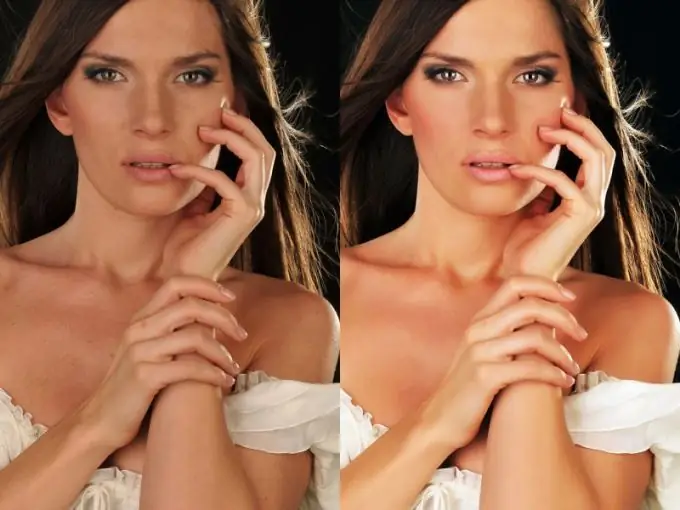The art of photography continues to evolve. With the advent of new technologies, for example, the ability to edit photos on a computer, new terms have appeared. In particular, photo retouching has long been an integral step in creating the final result.

General concept
The very concept of retouching comes from the word redactus, which is consonant with the Russian "edit". It follows from this that retouching in a general sense means editing a photograph in order to improve its quality. Quality means correct exposure and contrast, color tone matching, clarity improvement, and many other parameters. Old photos are often retouched: professional programs, such as Photoshop, allow you to get rid of scuffs and poor quality in general.
Technical retouching
The technical aspect of photo editing includes a fairly large list of parameters that need to be adjusted to perfection in order to get a high-quality image as a result.
A very important point of retouching is exposure (light distribution). Sometimes adjusting one exposure to equalize shadows is not enough, and you have to lighten or darken certain areas of the photo. It is also important to adjust the contrast and brightness - this will make the picture clearer, or, conversely, soften some of the lines. Adjusting the color tone will allow you to change the nature of the photo, for example, add a little sunshine or make the photo colder.
All the possibilities of technical retouching can be enumerated for a long time (even cropping is a means of retouching), far from all professional photographers know the entire list of possible manipulations.
Artistic retouching
Artistic retouching is the second stage of editing. At this stage, you can even change the composition of the photo, add effects that will reveal the photo from a new side.
Since photographers often use the word "retouching" directly to the process of processing the skin of the face and appearance in general, it is worth paying attention to this.
In general, retouching can be divided into two main areas: natural retouching and glossy. The first is used when the photographer needs to remove skin imperfections and correct some imperfections. At the same time, the model looks absolutely natural, and editing is imperceptible.
Especially natural retouching removes bags under the eyes, shine of the skin of the face, wrinkles and folds in the double chin, yellow teeth and red eyes.
If necessary, on top (just over) the natural retouch is made glossy. The hair is given a strong shine, the face is brought to full perfection, the colors become bright and saturated. Appearance is brought to an ideal state.
Obviously examples of glossy looks can be found on the covers of fashion magazines. By the way, you can see that photographs of men are not given as much gloss as women. Wrinkles and scuffs remain on the face - it is believed that this is an indicator of masculinity.






